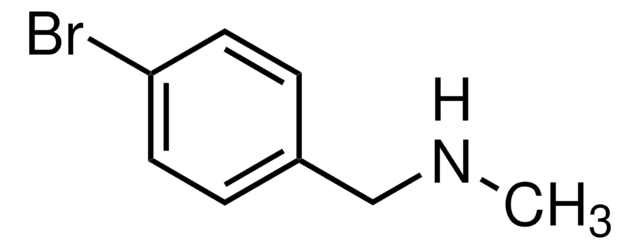N21804
3-Nitrophenylhydrazine hydrochloride
98%
Sinónimos:
(3-Nitrophenyl)hydrazine hydrochloride, 1-(3-Nitrophenyl)hydrazine hydrochloride, 3-Nitrophenylhydrazine monohydrochloride, m-Nitrophenylhydrazine hydrochloride
About This Item
Productos recomendados
Quality Level
assay
98%
form
powder
mp
210 °C (dec.) (lit.)
SMILES string
Cl.NNc1cccc(c1)[N+]([O-])=O
InChI
1S/C6H7N3O2.ClH/c7-8-5-2-1-3-6(4-5)9(10)11;/h1-4,8H,7H2;1H
InChI key
BKOYKMLGFFASBG-UHFFFAOYSA-N
Categorías relacionadas
General description
Application
<li><strong>Derivatization agent in analytical chemistry:</strong> 3-Nitrophenylhydrazine hydrochloride is employed as a derivatization agent for the determination of gamma-Hydroxybutyric acid in biological samples infected with Herpes Simplex Virus-Type 1, utilizing LC-MRM-MS techniques, providing enhanced detection capabilities in forensic and clinical toxicology (Osinaga et al., 2022).</li>
<li><strong>Residual analysis in pharmaceutical formulations:</strong> This compound is also used for the quantitative analysis of residual 4-nitrobenzaldehyde in chloramphenicol and its pharmaceutical formulations, employing HPLC with UV/Vis detection after derivatization with 3-nitrophenylhydrazine, offering a reliable method for ensuring the purity and safety of pharmaceutical products (Luo et al., 2018).</li>
<li><strong>Forensic application in decomposition analysis:</strong> Used to derivatized the blood samples collected at the time of forensic autopsy (Matoba et al., 2022).</li>
</ul>
signalword
Warning
Hazard Classifications
Acute Tox. 4 Dermal - Acute Tox. 4 Inhalation - Acute Tox. 4 Oral - Eye Irrit. 2 - Skin Irrit. 2 - STOT SE 3
target_organs
Respiratory system
Storage Class
11 - Combustible Solids
wgk_germany
WGK 3
flash_point_f
Not applicable
flash_point_c
Not applicable
ppe
dust mask type N95 (US), Eyeshields, Gloves
Certificados de análisis (COA)
Busque Certificados de análisis (COA) introduciendo el número de lote del producto. Los números de lote se encuentran en la etiqueta del producto después de las palabras «Lot» o «Batch»
¿Ya tiene este producto?
Encuentre la documentación para los productos que ha comprado recientemente en la Biblioteca de documentos.
Los clientes también vieron
Nuestro equipo de científicos tiene experiencia en todas las áreas de investigación: Ciencias de la vida, Ciencia de los materiales, Síntesis química, Cromatografía, Analítica y muchas otras.
Póngase en contacto con el Servicio técnico








